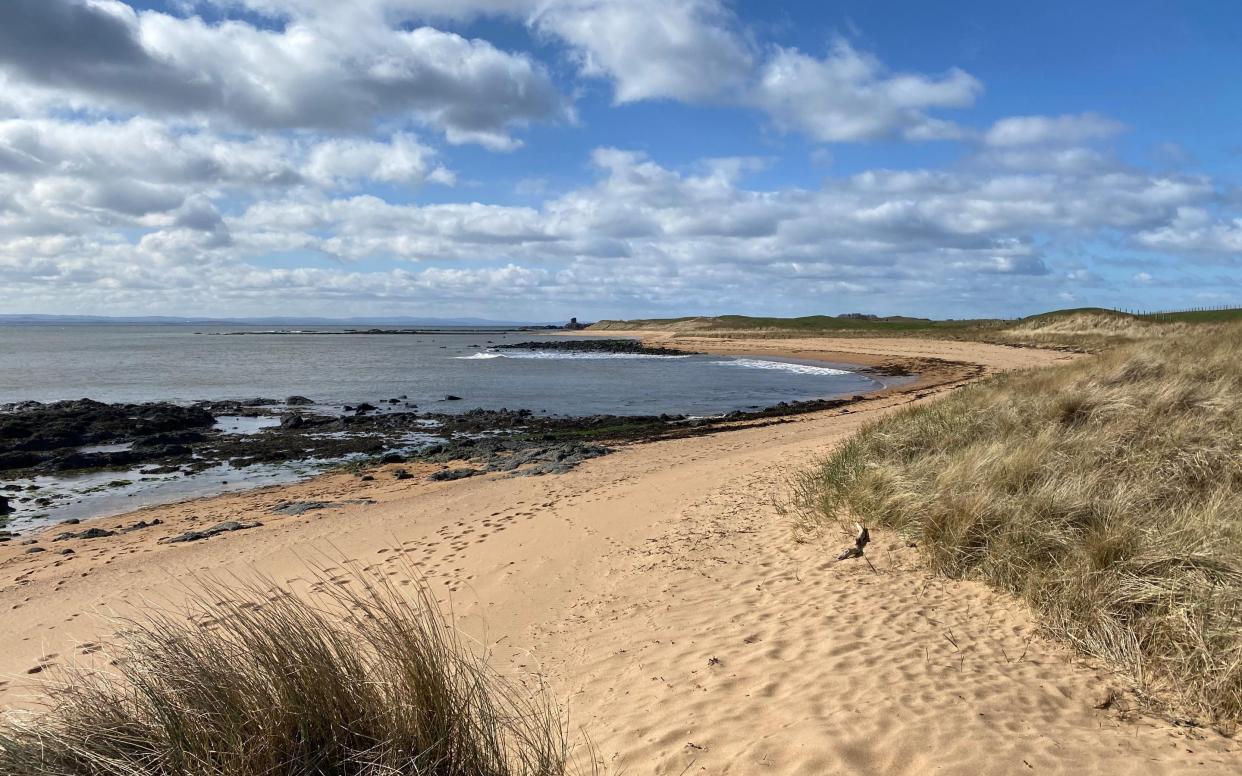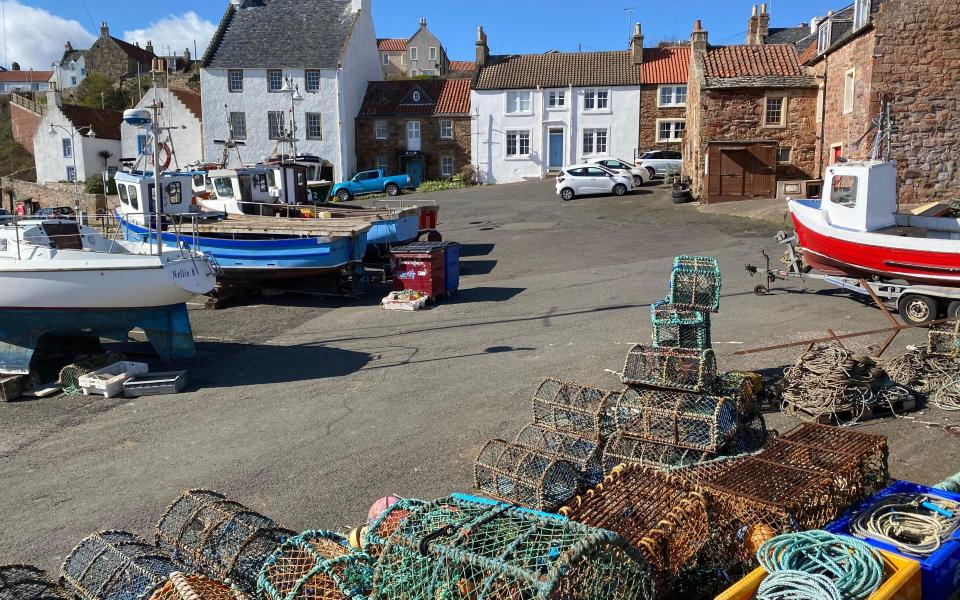A love letter to East Neuk, Scotland’s forgotten corner

- Oops!Something went wrong.Please try again later.
Washed with fishing villages, a bounty of seafood restaurants and postcard-pretty coast, Fife’s East Neuk can scarcely avoid Cornwall comparisons; but a pale imitator this is not. The feisty birthplace of Robinson Crusoe swims in Viking legends, conjured up its own indie record label, breathes life into artists and its hinterland offers arguably Scotland’s finest farmland. And, yes, there is whisky too. Cornwall’s Celtic cousin has even managed to beat Rick Stein to a Michelin star – two in fact – and perhaps most beguiling of all, if you’ve ever been gridlocked in St Ives, this Cornwall comes without the crowds.
Crail may have staged one of Europe’s largest medieval markets, but it then became the forgotten ‘Neuk’ (corner) of its name. As fishing struggled in the second half of the 20th century and the railway fled in 1965, artists snapped up fishermens’ cottages; second home owners from Edinburgh snared bargains too.
Sound familiar? The East Neuk, though, didn’t lose a shred of its character and it has never really caught the eye outside Central Scotland, bar a fleeting flush with fame when – ironically with the pandemic that never was – Cellardyke’s bird flu case revealed its charms on TV news bulletins. The phones rang off the hook at the local estate agents and holiday lets. Then fell silent.
Even as a Scot who lives just across the Firth of Forth, I seldom visit. Local boy made good Billy Boyter – who left to emerge as a celebrated chef then returned to create the Michelin starred Cellar – is quick to assuage my guilt: “It wasn’t until I moved away that I realised too what a special place the East Neuk is. I’m almost a little embarrassed it took me so long to see what was right in front of me. In Edinburgh we would pay foragers to pick us fresh seaweed, now I can just nip over the harbour wall in the morning and pick my own.”

Boyter isn’t alone in finding foodie success. In that fertile hinterland, Jane Stewart’s St Andrews Farmhouse Cheese Company brims with East Neuk spirit. Realising her dad’s dairy farm was unviable she turned the Friesians to cheese. Her Anster (the old name for Anstruther) cheeses have won a string of awards; best enjoyed in the café and deli, where a window lets you watch her and the cows at work.
The mercurial Geoffrey Smeddle at the nearby Michelin-starred Peat Inn has found foodie, poetic nirvana in the East Neuk: “While the Misty peaks of a Highland Wilderness make magnificent Instagram shots, here in Fife we’re blessed with a landscape that rises softly across rich farmlands, where cattle fields reach right down to the very shoreline and the famous ‘golden fringe’ boasts an enviable abundance at every turn.”
You could come to the East Neuk ‘just’ to eat, as savvy Scottish gastronomes do, but it tempts beyond the plate too. Just an hour’s drive from Edinburgh the East Neuk loosely begins around Lower Largo, birthplace of Alexander Selkirk, the real-life inspiration behind Robinson Crusoe. Hike from his swarthy statue and it’s a fittingly dramatic introduction on the legendary ‘Chainwalk’, the toughest part of the Fife Coastal Path that shimmers through the East Neuk towards St Andrews.
This is Defoe-worthy adventure, the stuff of lifeboat callouts if you misjudge the tides. But it’s worth it to get to Elie.

Elie is the quintessential East Neuk fishing village. On my last visit my nearly-teen informed me “they all look the same”. She has a point – they sort of do. Think of it as a winning palette that each develops and ad libs. There is the painter-salivating wee harbour complete with busying fishing boats, the arc of tempting sand and the big skies alive with gulls – gannets too and even sea eagles. Framing the scene are pastel-hued and whitewashed houses sprinkled along oil painting-like stone streets, with narrow lanes snaking off up the cliffs in search of the life-affirming views back across the Forth islands to Edinburgh that the upwardly mobile merchants craved.
A couple of hours walk further east is St Monans, then comes Pittenweem, the latter reached via a stretch of coastline that offers a brilliantly renovated windmill and a Victorian-era seawater swimming pool, currently being resurrected.
As well as the best name, Pittenweem – ‘Place of the Cave’ – still houses St Fillan’s Cave. It’s an unassuming nook for a larger than life man who browbeat the local fishermen into Christianity before foolishly trying it on the Norsemen. The local artists aren’t shy in coming forward either, with workshops and galleries proffering their work, culminating in the annual Pittenweem Arts Festival.

Next up is the East Neuk’s biggest, busiest place: Anstruther. It bustles on sunny weekends, but Padstow this is not, still very much a village rather than a town. The most famous chippie is the Anstruther Fish Bar, who process and smoke their own fish; claiming to serve the “Best fish and chips in Britain’. There can be queues, but there is an even better chippie just a few doors along – isn’t there always? I’ve never had to wait long at the Wee Chippy.
Afterwards, join the dots of all the settlements along this coast at the Scottish Fisheries Museum, or nip into a pub for insider tales about the Fence Collective, the musical phenomenon that spawned King Creosote and Pictish Trail; a record label and a music festival too.
A sprinkling of isles tempt offshore. Bash out from Anstruther to the Isle of May in June and the cliffs burst with seabirds. This is proper nature, though. On my first visit, as I waxed lyrical about the puffins to my youngest, a great skua ripped in to tear a chick from a nest in front of us. A porpoise on the way back saved the day. You get whales too – a young humpback has been spotted frequently this year, feeding happily.
We hike now from Anstruther to Cellardyke, or rather step as it's joined at the hip. The harbour is much quieter, the welcoming Norse-named Haven pub tucked amongst a sprinkling of holiday lets, unassuming artist studios and, yes, real homes. It’s very much a locals-pub, but couldn’t be more welcoming.
Last but certainly not least is Crail, another four miles east, and more accustomed to tourists, who flock to its pottery. Many a writer hails Crail as the quintessential East Neuk fishing village. Another one. You know the format now, but Crail cranks it up with a lobster shack nudging into the postcard scene. I enjoyed the biggest lobster I’ve ever had here; more collie than crustacean. Crail swims in history too, the ghosts of that massive medieval market lingering on the tree-lined Marketgate. Again Crail’s orange roof tiles and crow-stepped gables suggest it was busy with Scotland’s Low Countries neighbours.

Leaving the south coast East Neuk fishing villages behind the strikingly wild wilds of Fife Ness envelop, rounding a headland that has done for many a fishing boat. If you really did mean the hasty promises made to the kids during the darkest days of Lockdown, this is the place to really get away from it all with beaches and camping under endless starry skies.
Seemingly determined to avoid fame, the East Neuk eschews the well-worn charms of St Andrews and calls time just south at Kingsbarns. This wee village was catatonic until local caddie and entrepreneur Douglas Clement grew so sick of being asked by customers why Fife didn’t have a distillery that he forged his own.
Hiking towards the Kingbarns Distillery, his face alive in the gloaming, Clement doesn’t think its success will affect the East Neuk’s appeal: “It’s not about what we add today. It’s the ever-changing light, the sense of peace and solidity of the historic architecture; a feeling it’s always been like this.”
In the search for that intangible something post-Lockdown, you might consider venturing to the East Neuk before the Cornwall-esque crowds descend. Just don’t tell Rick Stein.

